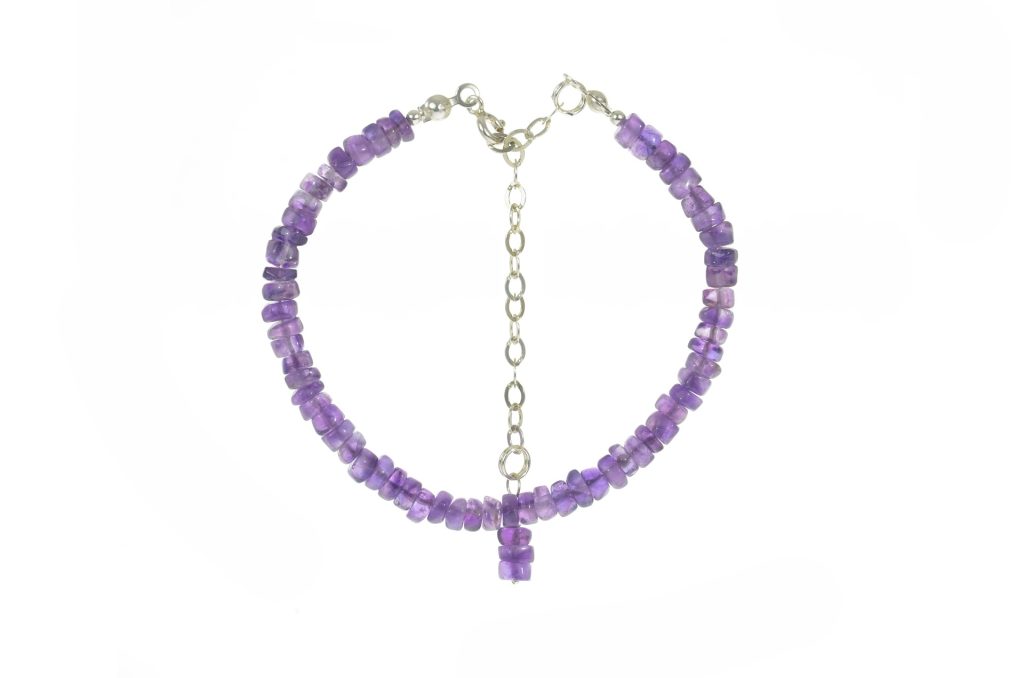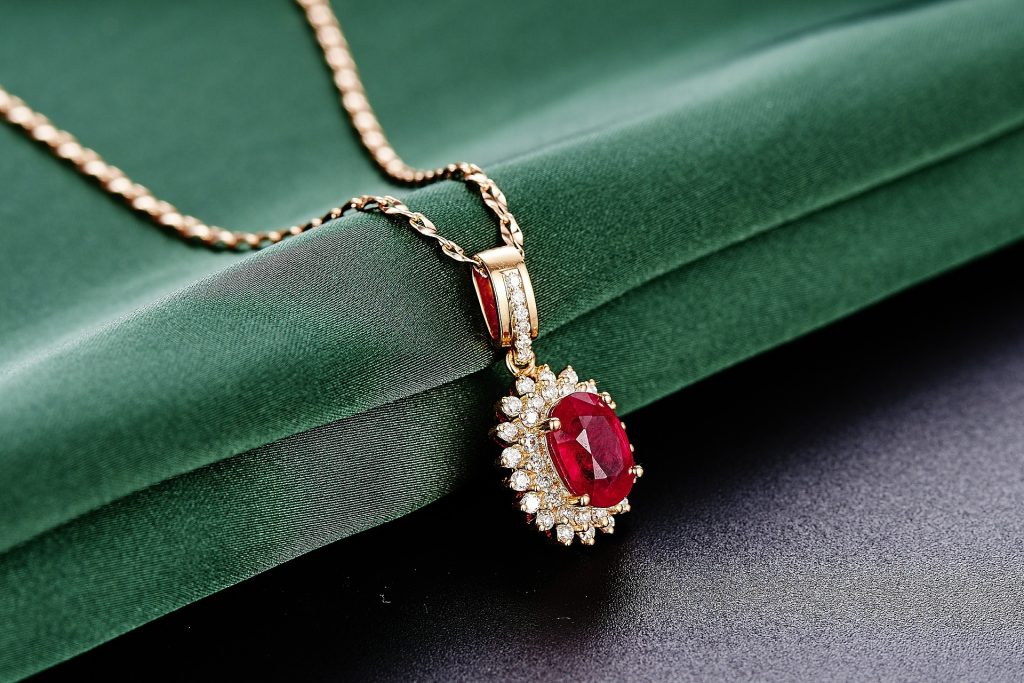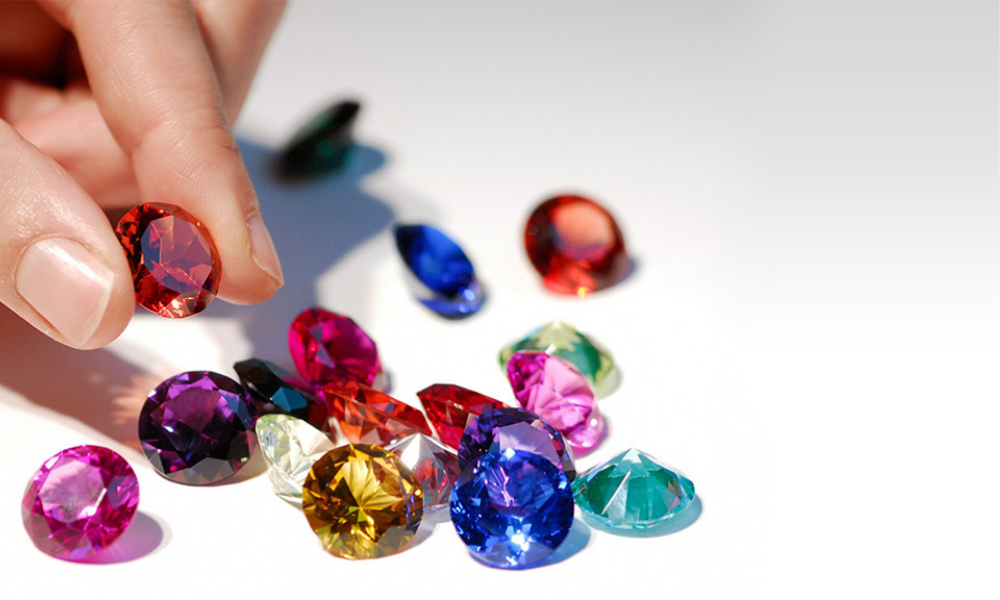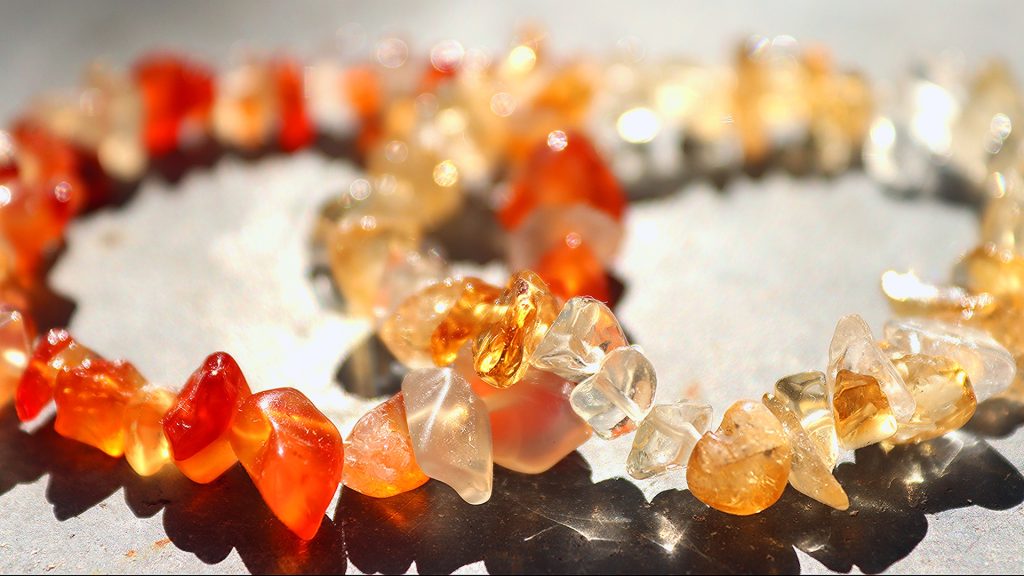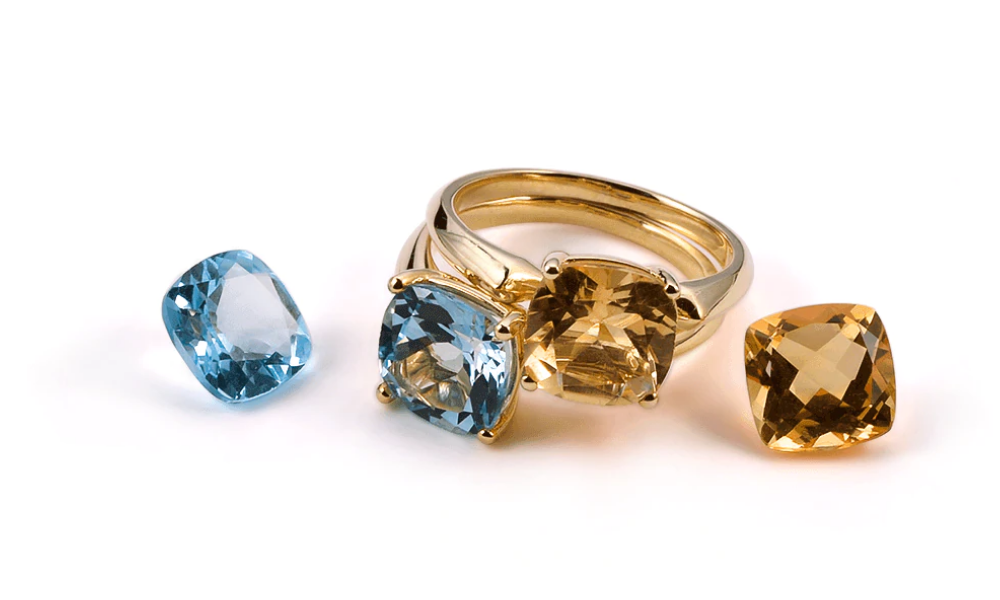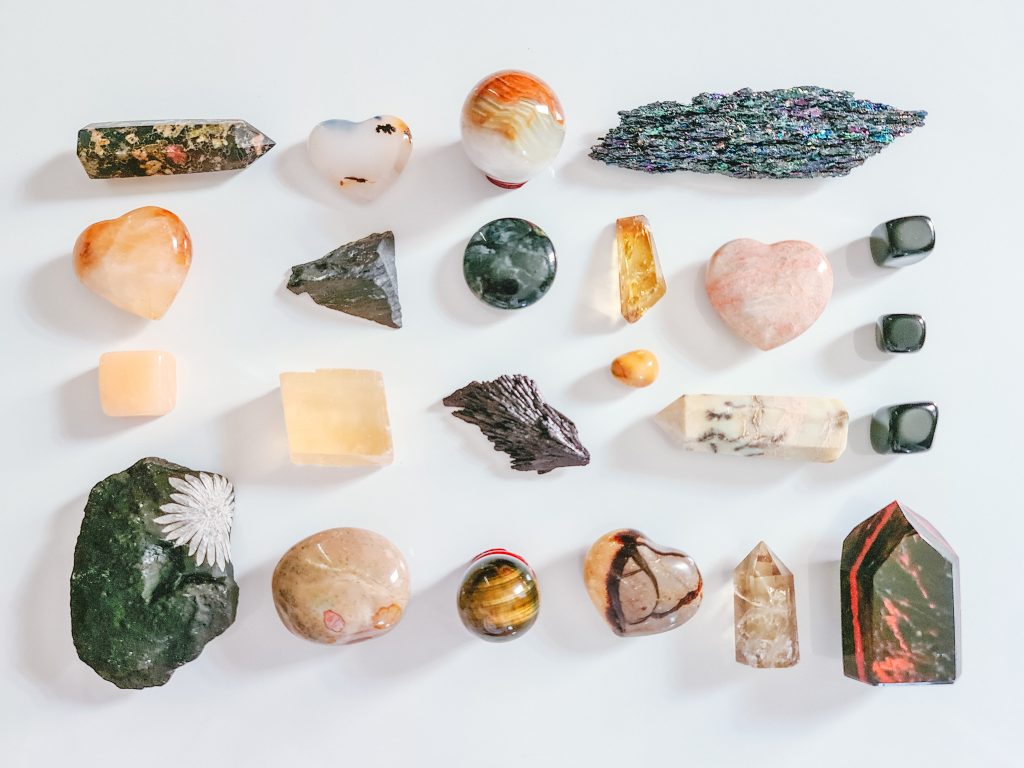There are many different ways to create your unique piece of jewelry, but a great place to start is with gemstones. Gemstones come in many shapes and sizes, and they are easy to find at your local craft store. Be careful, though, because they can be hard to work with. When you’re just starting, you might not be able to find the right gemstones for your needs. You can buy inexpensive stones from a large craft store that does not specialize in jewelry making.
Another great way to create your gemstone jewelry is to purchase cabochons. These are a great way to work with smaller gemstones and are generally more durable. However, you should have some experience in wire-wrapping, bezeling, and soldering before you start. Be sure to choose gemstones that you’ll be able to afford to break. These are also the most expensive types of jewelry to make.

What is Gemstone Jewelry, and What Kind of Jewelry can be Made?
Jewelry produced from rock, mineral, or petrified substance that has been cut and polished to give it a stunning appearance is known as gemstone jewelry. The beauty of a gemstone distinguishes it from other rocks and makes it valuable to jewelry collectors. The stones are customarily dug up from the ground, then cut and polished before being sold. Some diamonds are treated to improve their appearance. Brown zoisite, for example, is heat-treated to produce the beautiful blue gem tanzanite, while emeralds are routinely treated with oil, wax, or resin to hide faults.
The term “jewel tones” characterized beautiful jewels’ rich, bright colors. A spectacular piece of gemstone jewelry may be the focal focus of an entire dress, adding color and sparkle to an otherwise dismal look. Gemstones can be found in a wide range of jewelry, including:
Here is a Beautiful Handmade Gemstone Bracelet
Bivei Natural Gem Semi Precious Reiki Healing Crystals Handmade 8mm Round Beads Stretch Bracelet
Features
- 100% GENUINE STONE: High-quality natural gemstone in a suitable size for both men and women. Strong elastic string is used to thread our bracelets. Flexible and long-lasting.
- The round bead size is approximately 8mm, the bracelet length is approximately 6.8 to 7.2 inches, and each strand has 23 beads.
- Quality Bracelet crafted by hand with no metal, suitable for delicate skin.
- Natural stones come in a variety of colors. Each bead is one-of-a-kind, and you will receive an item identical to the one shown in the picture.
- These lovely bracelets are beautiful gifts for family and friends for Christmas, birthdays, Thanksgiving, etc. It comes packaged in a high-quality Bivei Gift box, ready to give or store.
What is the Best Way to Make Jewellery at Home?
You can produce jewelry at home with a few essential tools and supplies, and some jewelry production will necessitate a more considerable equipment expenditure. If you’re sure you want to produce jewelry at home, do your homework before committing to a technique.
Decide on the Type of Jewelry you Wish to Make
The first step in manufacturing jewelry at home is choosing a project you want to work on. When it comes to jewelry manufacturing, there are many options, from casting precious metals to fusing glass pendants. Choose one media to concentrate on first, such as wire wrapping or casting jewelry, and know that you can learn and experiment with other techniques later. One technique’s talents will likely be built upon and applied to other jewelry-making methods.
Look for Motivation
Get motivated! A simple web search, a deep dive into Pinterest, or browsing through jewelry stores will demonstrate endless possibilities! Begin by becoming inspired and deciding whatever materials you’d like to create with, such as metal, clay, or glass. After that, you may plan your project and decide what supplies, tools, and equipment you’ll need.
Create your Piece
Start designing your piece with a simple sketch on paper if you’re unsure where to start. Consider the many shapes, colors, and materials that you find inspiring. You can start from scratch or use a vintage piece of jewelry as inspiration.
This sketch will assist you in determining what materials and tools you will require to bring your drawing to life. Label each section of the design with the resources you’ll need as you’re creating it.
Get your Hands on Some Tools and Supplies
Once you’ve decided on a design, you may gather the appropriate equipment and supplies. Wire-wrapped jewelry is the most accessible jewelry you can produce at home, and it only takes a few essential tools and does not necessitate using a kiln. A torch and soldering equipment are required to make soldered jewelry when working with precious metals. A kiln is required if you have access to more advanced equipment and want to make fused glass or metal clay jewelry. If you need to cast valuable metals for your project, you’ll need a centrifugal casting machine.
Prepare your Work Area
Create a clean table space in a well-lit location. Because jewelry production takes place on a much smaller scale, it’s a good idea to have lots of light and, if required, a magnifying lens. Your workstation should be stable so that it doesn’t shake when you’re hammering, stamping, and working on your jewelry. As a jeweler, a comfortable seat is essential because you’ll be sitting in it for hours. Consider a chair that provides back and neck support. Set up your seat, so your bench peg is at eye level, so you don’t have to slouch over your work. Ensure you have enough ventilation, safety goggles, a mask, and other fire safety equipment if you plan on sanding, soldering, or polishing.
What are the Different Settings for Gemstone Jewelry?
Prong Setting
Practically everyone recognizes the prong setting because of its use in engagement rings. There appears to be a prong-set design for every shape and size gem, with the traditional four or six prong arrangements being the most common. The styles of prong sets range from trellis motifs to baskets. Prong-set stones are elevated, allowing light to penetrate from all sides, and it is undoubtedly the most common style of stone placement for particular featured gems. Faceted stones are prominently shown in prong settings.
Bead Setting
A bead setting is typically used to display strands or continuous rows of tiny diamonds. Bead setting was prominent in Georgian, Victorian, Edwardian, and Art Deco jewelry from the late 1800s through the early 1900s, but it fell out of favor for about 90 years. It’s back, and it’s better than ever. Today, bead setting is making a comeback in practically every section of the jewelry industry.
Pave Setting
Pave setting is simply a bead setting technique. The distinction lies in the way the stones are arranged. Diamonds are set in fields rather than rows or strands in pave setting. Pave set diamonds often cover a large area and share beads to give the appearance of a diamond-studded look. Pave setting creates stunning diamond surfaces that are highly sought after in fine jewelry.
Bezel Setting
A bezel setting is thought to be derived from the name of Bezalel, the earliest recorded jeweler who is credited with creating the Ark of the Covenant. Bezel setting, which is still popular today, is used to fasten most cabochon cut gemstones and many-faceted stones used in fine jewelry. A bezel setting can be found in exotic, expensive jewelry in 5th Avenue stores and crude and primitive forms.
What are Different Types of Jewelry Making?
Crafting ornamental objects worn for personal ornamentation or adornment is jewelry making. The materials can be anything from stone to precious metals, and the techniques are endless. Various jewelry creation necessitates different abilities, so do your study before getting started.
Jewelry with Beads
The art or craft of connecting beads with a needle and thread or thin wire is known as beaded jewelry. Beads are tiny bits of plastic, glass, gemstones, or wood with a hole in the center for threading used in jewelry.
Jewelry Made of Wire
Wire wrapping, which dates back 4,300 years in Iraq, is one of the earliest jewelry-making techniques. It was initially employed as a narrative tool, but it is now being utilized to create jewelry and sculptural art. The method entails wrapping wire components over one another without using solder or heat to link them.
Jewelry Made of Silver and Goldsmithing
Hammering, casting, soldering, chasing, riveting, embossing, and other techniques shape precious metals into jewelry and other objects in silver and goldsmithing.
Jewelry Made of Fused Glass
Jewelry components, such as pendants and small wearables, are made from fused glass. To make a finished fused glass artwork, you need a kiln and a few simple types of equipment. The possibilities of fused glass jewelry are endless due to the various types and hues of glass.
Jewelry Made of Metal Clay
Metal clay jewelry is created using a unique clay that hardens after being burnt in a kiln. Before firing in the kiln, the clay is easy to mold with tools. Metal clay can construct various items, including beads, pendants, solid rings, and more.
What is the History of Gemstone Jewelry?
It’s difficult to envisage a world without jewelry because it’s been worn for so long. A necklace made of bones discovered in Monaco around 25,000 years ago is the earliest known example of jewelry. Stone jewelry first appeared between 3,000 and 400 BC in Iran and the Mediterranean. Many stone amulets were carved with simple motifs such as flowers and stars and functioned as offerings to the gods. Talismans with beautiful gems and stone-carved symbols were used to decorate tombs and mummies in ancient Egypt. Greeks used gold and gemstone jewelry, frequently as a tribute to gods, as early as 1200 B.C. to symbolize prosperity and abundance. The Romans had a strong reverence for the symbolism of jewels and believed in magic and myth. They also used gold coins to melt down and cast into jewelry.
In 330 A.D., when Emperor Constantine relocated the Byzantine Empire’s capital to Constantinople, it became a cultural crossroads, bringing together the diverse cultures of Greece, Egypt, the Near East, sections of Russia, and North Africa. It was a hotbed for design and symbolism in the fabrication of ornamental jewelry and a hotbed for the technique of cloisonné enameling. When Rome collapsed in 476 A.D., many luxuries, such as jewelry, were scarce, and churches held most riches and exquisite jewelry. The nobility and churches looked down on commoners who wore jewelry throughout the Middle Ages, and Sumptuary Laws were used to enforcing this.
During the Renaissance, jewelry became more affordable to the general public, and artists made significant advances in inventive design and wearable art. The majority of modern jewelry adheres to classic forms and styles. While traditional processes have remained constant, emerging technologies such as 3D printed casting and lab-grown gemstones transform the landscape.
Conclusion
If you’re new to making jewelry, you’ll need a few tools and materials. Essential jewelry-making tools include a jeweler’s saw, flush cutter, and round, flat, and chain nose pliers. Practice materials are an excellent way to learn the ropes before attempting more complicated jewelry. Make sure to do thorough research on how to make gemstone jewelry. If you’re not sure about any particular technique, you can always try it out on a different medium.
One of the most popular types of gemstone jewelry is birthstones. Each month is associated with a particular type of gem, and the birthstone is for the person born in that month. Some months have two birthstones, so choose appropriately. Whatever gemstone jewelry you choose to make, these pieces are great gifts for loved ones. Make them memorable gifts this Mother’s Day. They’ll be cherished for years to come!

